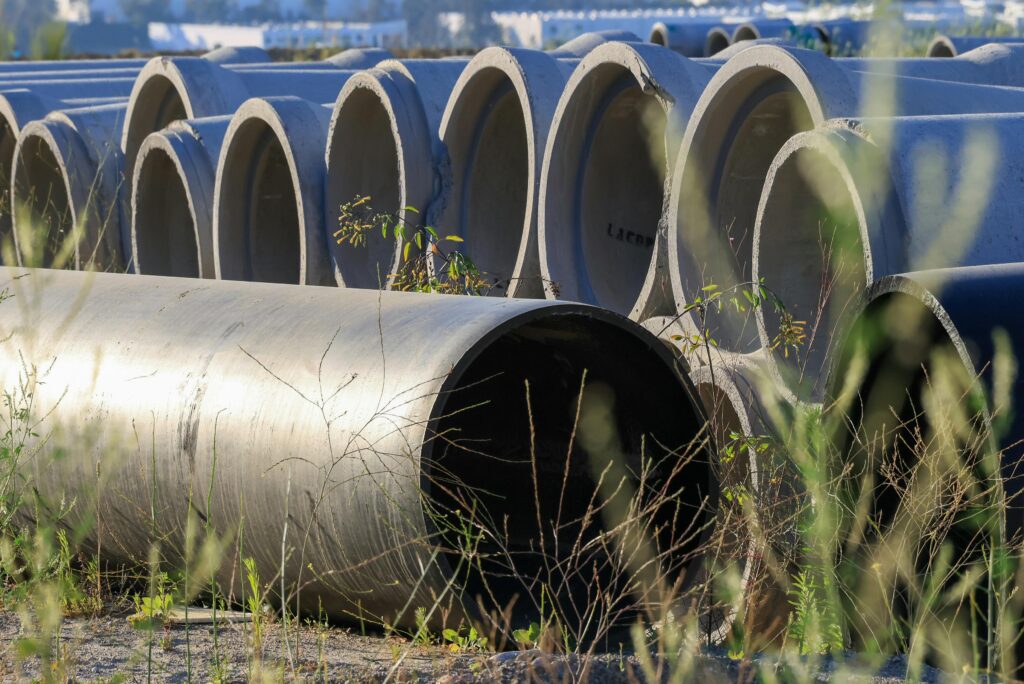Among the most important but often overlooked aspects in designing and developing a site is proper drainage. Effective site drainage alone does not limit itself to discouraging puddles or minimizing damage from the flow of water; what it actually does is create sustainable, safe and functional environments. The concept behind site drainage aims to uphold structural integrity, uphold long term functionality and overall comply with environmental regulations.
Why Site Drainage Matters
When uncontrolled, water can become a formidable adversary leading to a number of problems including:
- Soil run-off can carry away that topsoil which forms the foundation structure underminig the integrity of such structures.
- Excessive moisture can form cracks or foundation subsidence since it weakens the foundation further.
- Water runoff without proper control makes it carry other pollutants into nearby natural watercourse systems potentially harming the habitats.
Site drainage is more proactive than mitigative means of water managing, considering both hydrological and topographical influences.
Principles of Site Drainag
Before going into details about the design of drainage systems, some principles are mentioned below:
- Hydrological analysis: Comprehension of the on-site movement of water is essential. This covers description of rainfall regimes, soil permeability, and topographic contours.
- Runoff Management: Impervious vs. pervious surfaces affect water flow rates. The runoff coefficient for each can be calculated to determine the system’s capacity.
- Sustainable Solutions: When possible, utilize more green infrastructure in the form of bioswales, rain gardens, and permeable pavements as part of best practices in environmental conservation.
- Design for Resilience: Consider climate variability and extreme weather events. It’s better to over-design a little for stormwater capacity than to have headaches later.
- Regulatory Compliance: Regulate according to local regulations based on storm runoff quality and pollution discharge points during storm events.
Designing Site Drainage: A Step-by-Step Guide
Designing an effective site drainage system requires a methodical approach. Here’s a simplified process for civil engineers:
- Site assessment
Conduct a comprehensive topographic and hydrological survey. Identify natural watercourses, depressions and areas liable to water accumulation. - Hydrological Calculations
Determine rainfall intensity and duration based on local climatic data. Calculate peak runoff using formulae like the Rational Method or TR-55. - Select Drainage Features
Choose surface and subsurface features based on needs. Wherever possible, incorporate sustainable elements. - Create Grading Plans
Design slopes to facilitate water movement towards drainage points. Flatten minimum areas of catchment where water can stagnate. - Modelling and Simulation
Models like AutoCAD Civil 3D or SWMM are useful tools to simulate the performance of the system and locate bottlenecks or regions where more capacity would be beneficial. - Implement and Monitor
Monitor construction as per designed plans. The operation of the system post-construction would be monitored; modifications can also be done during this phase to ensure it improves.
New Horizons in the Modern Site Drainage
Climate and urbanization in modern times offer new challenges where new solutions of drainage have become part of the day-to-day problems.
Here are some of the current trends and technologies reshaping the field:
- Permeable Pavements: Materials such as permeable concrete and interlocking pavers enable water to percolate through them, thus considerably reducing runoff.
- Green Roofs: Vegetative layers on rooftops absorb rainfall and reduce peak flow rates.
- Smart Drainage Systems: IoT-enabled sensors monitor water levels and optimize flow in real-time.
- Water Harvesting: Capture and reuse rainwater for irrigation or non-potable uses.
- Natural Drainage Systems: Mimic natural hydrological processes with bioswales and constructed wetlands.
Common Pitfalls to Avoid
Despite the best intentions, mistakes in drainage design can lead to costly consequences. Here are some common pitfalls to watch for:
- Underestimation of Rainfall Intensity: Not under-designing the systems through the use of updated climate models.
- Neglecting Maintenance: Even the best-designed system needs periodic maintenance.
- Overlooking Small Details: Poor pipe slope or insufficiently compacted soil can easily become the biggest issue.
- Overlooking Stakeholder Input: Consult with the client, local authorities, and community members to address issues early.
Conclusion: Engineering for the Future
Site drainage is an art as much as it is a science. Civil engineers play a vital role in the responsible management of water, ensuring safety, sustainability, efficiency and resilience. By staying informed about the latest techniques and technologies, you can craft systems that not only meet today’s demands but anticipate tomorrow’s challenges.
